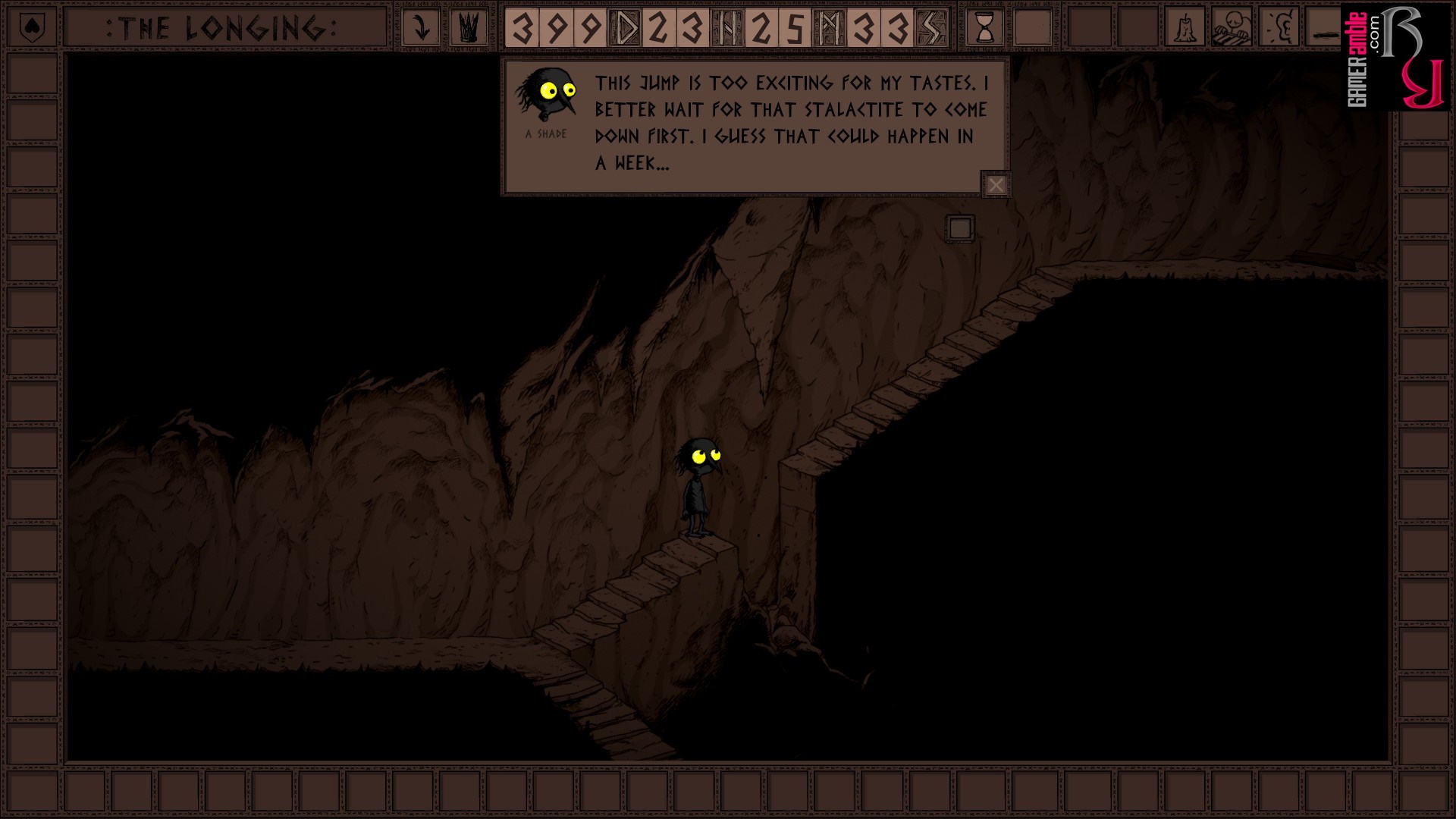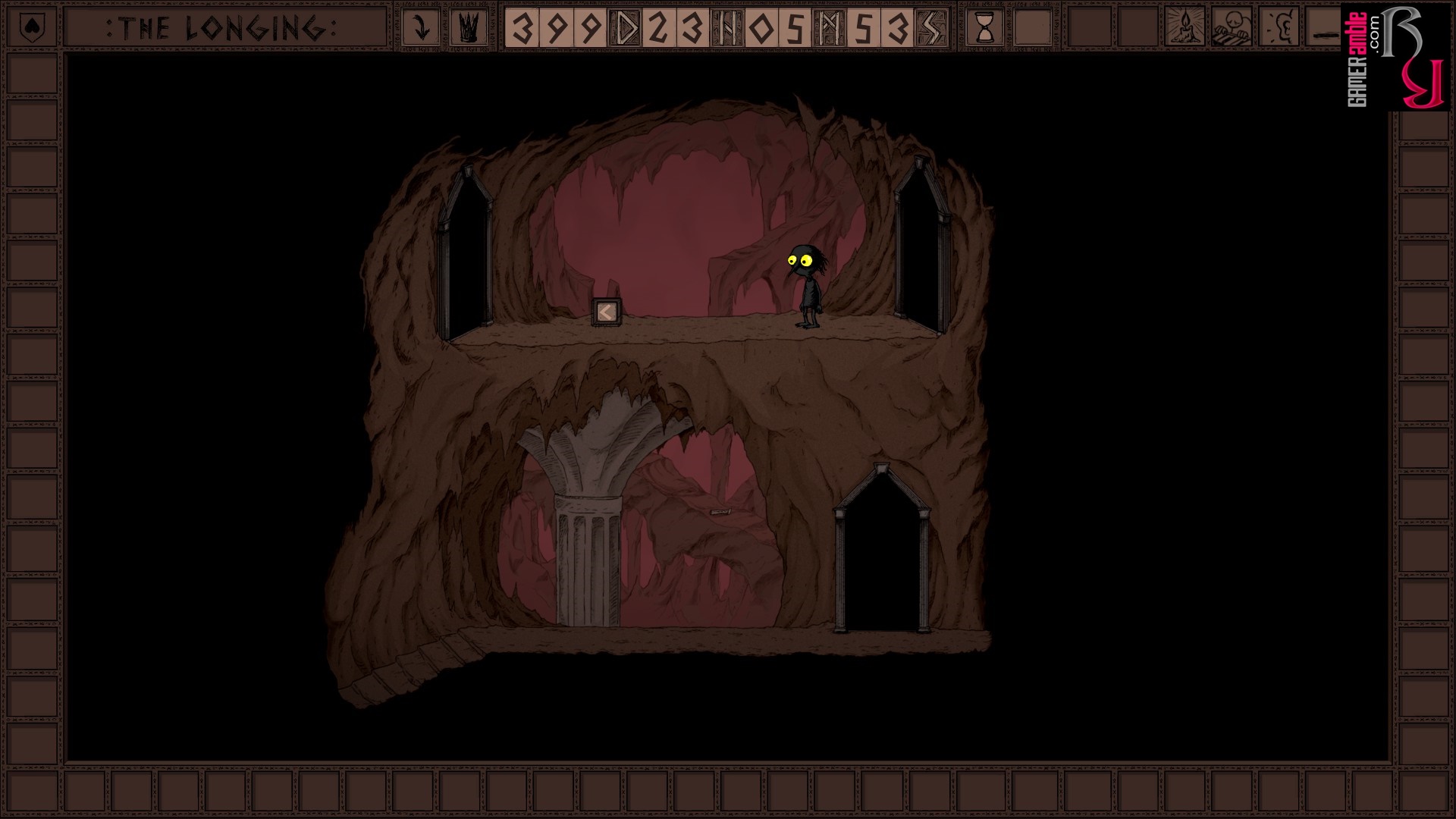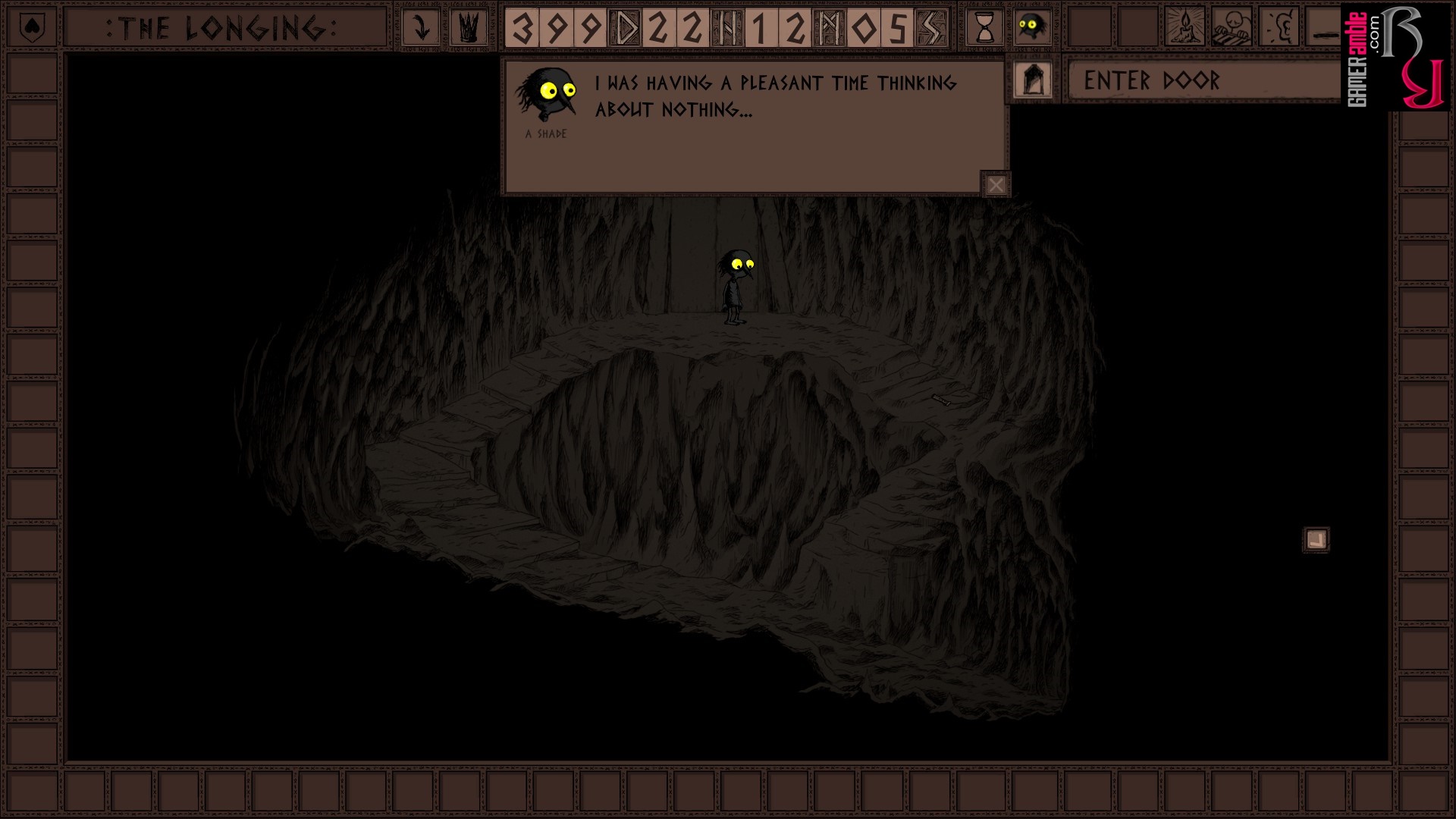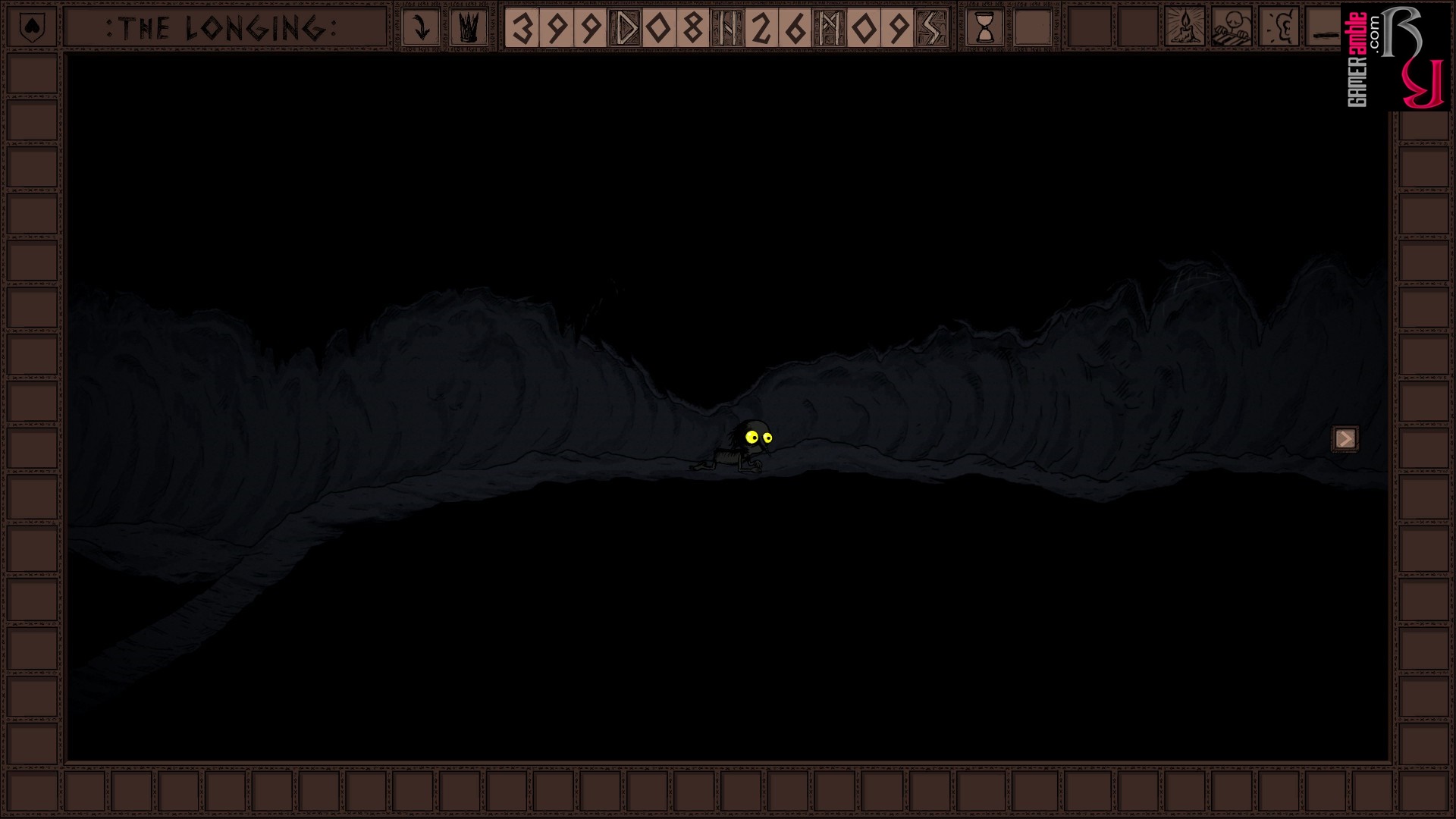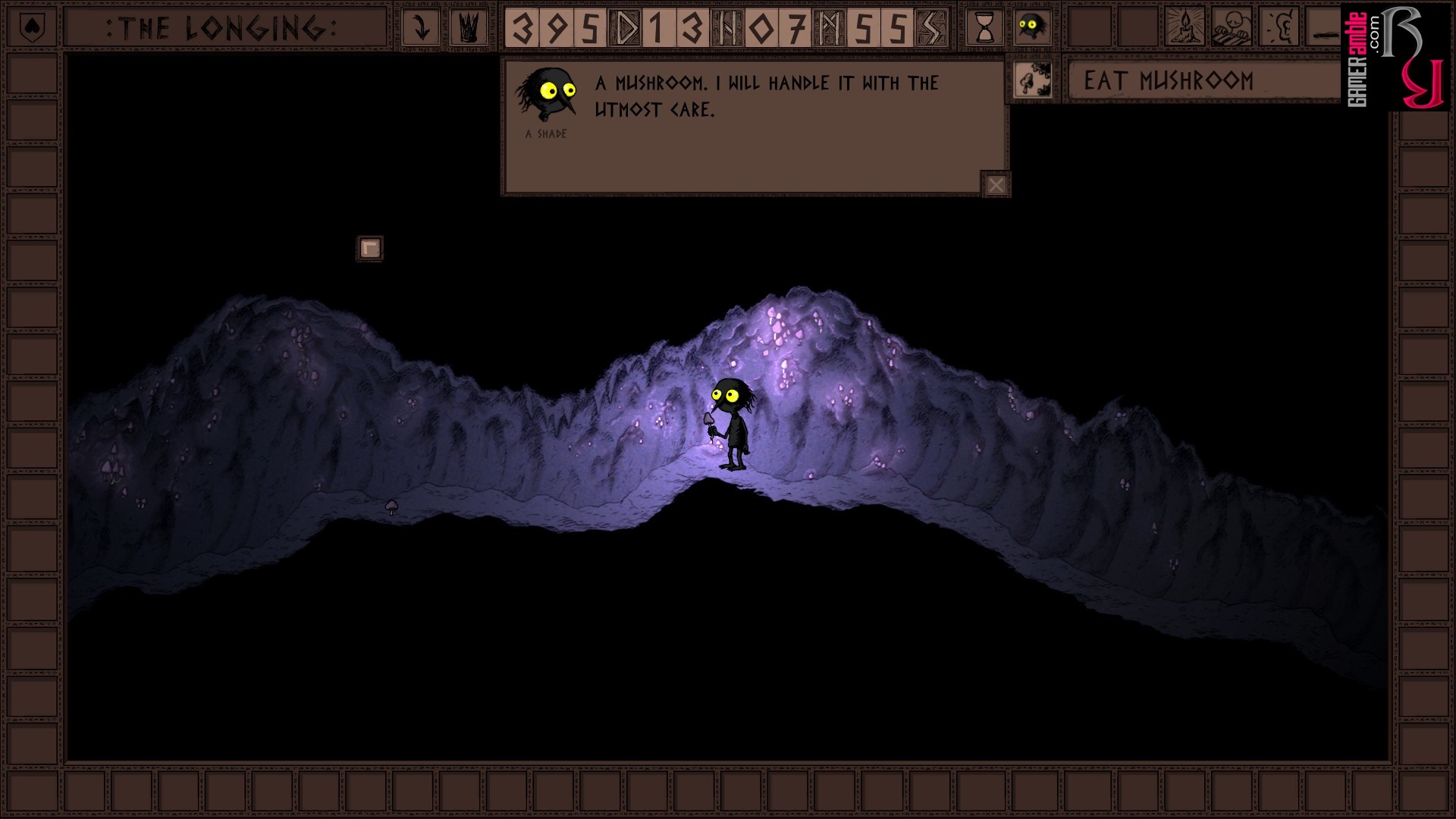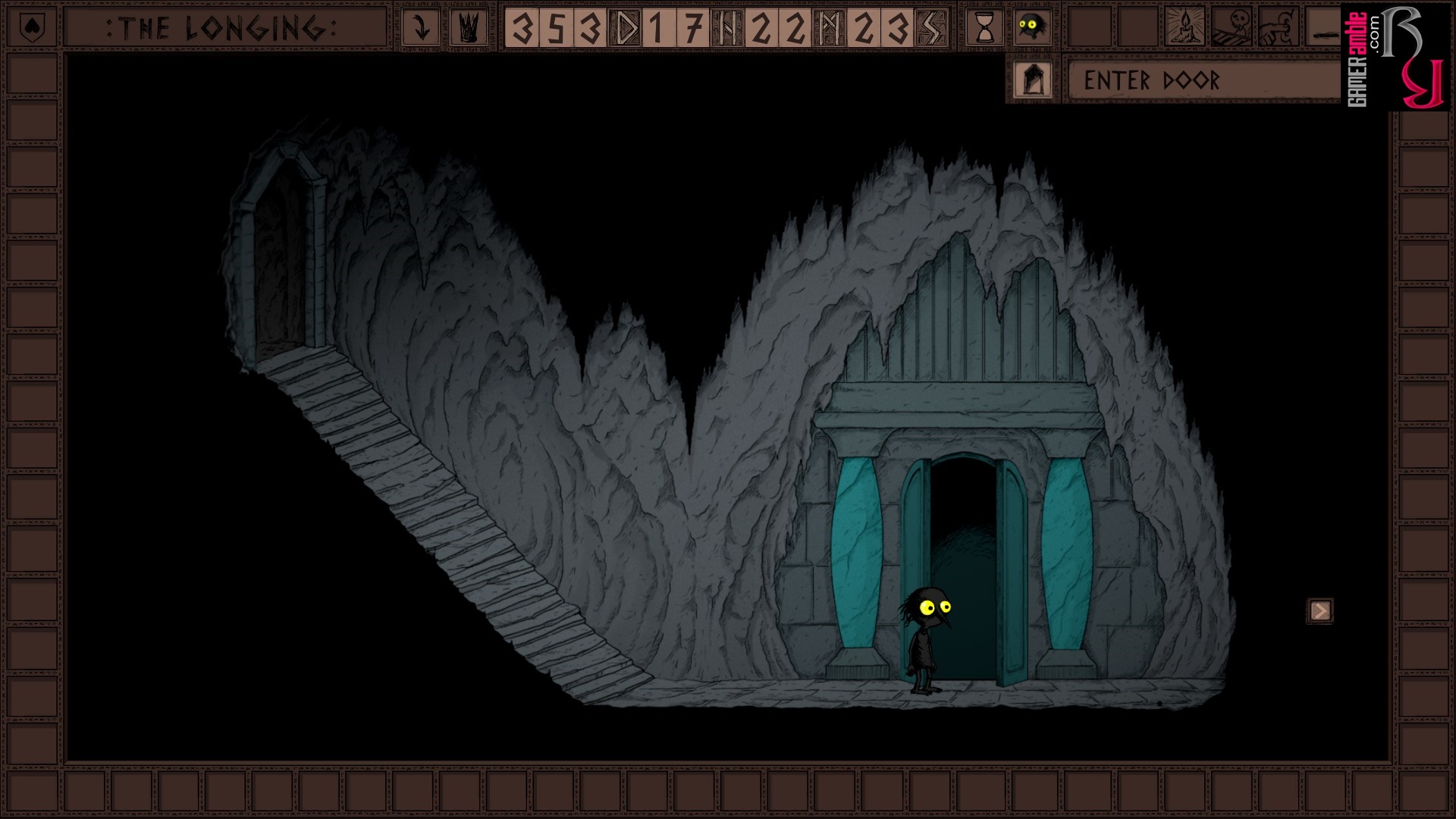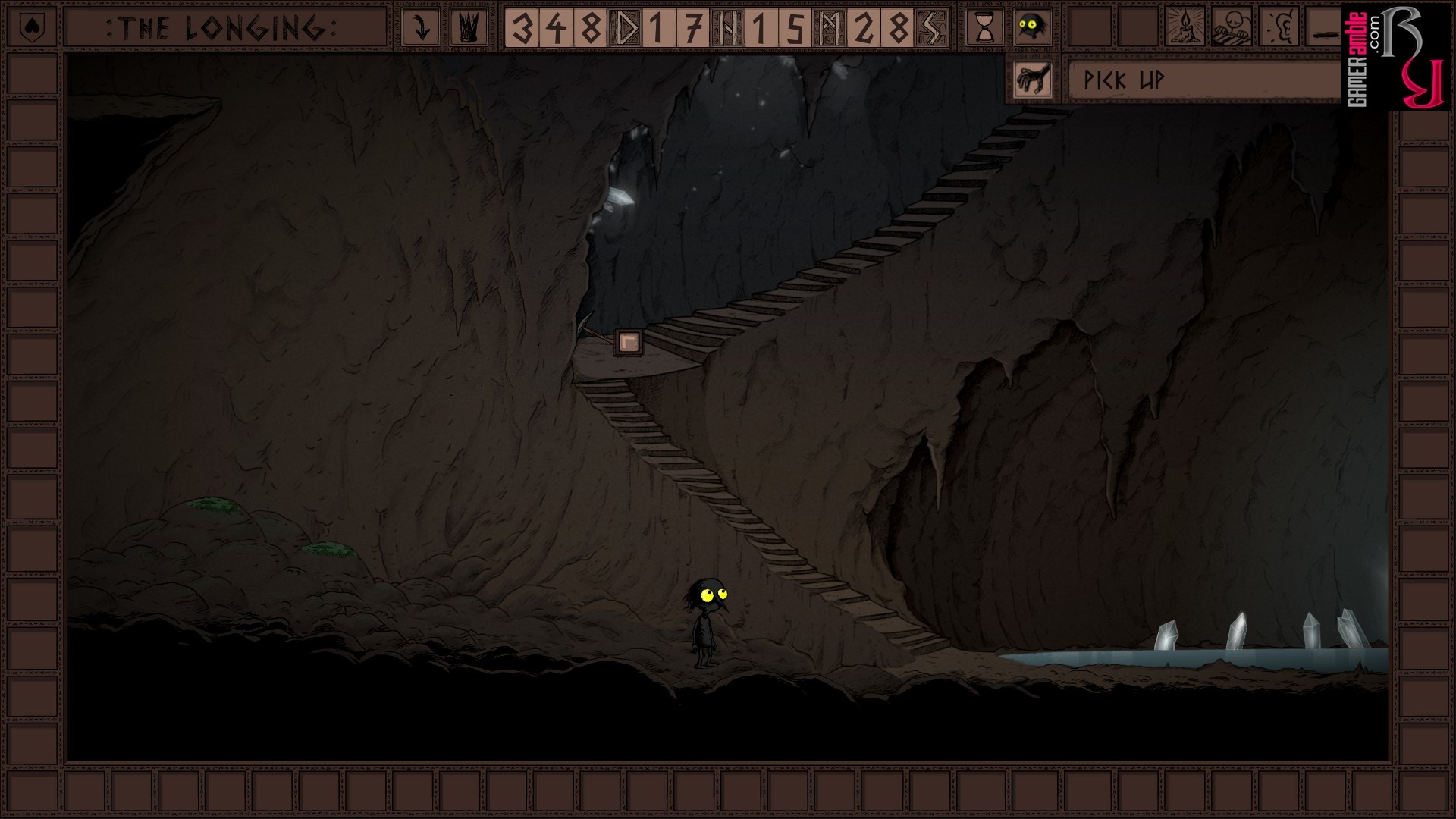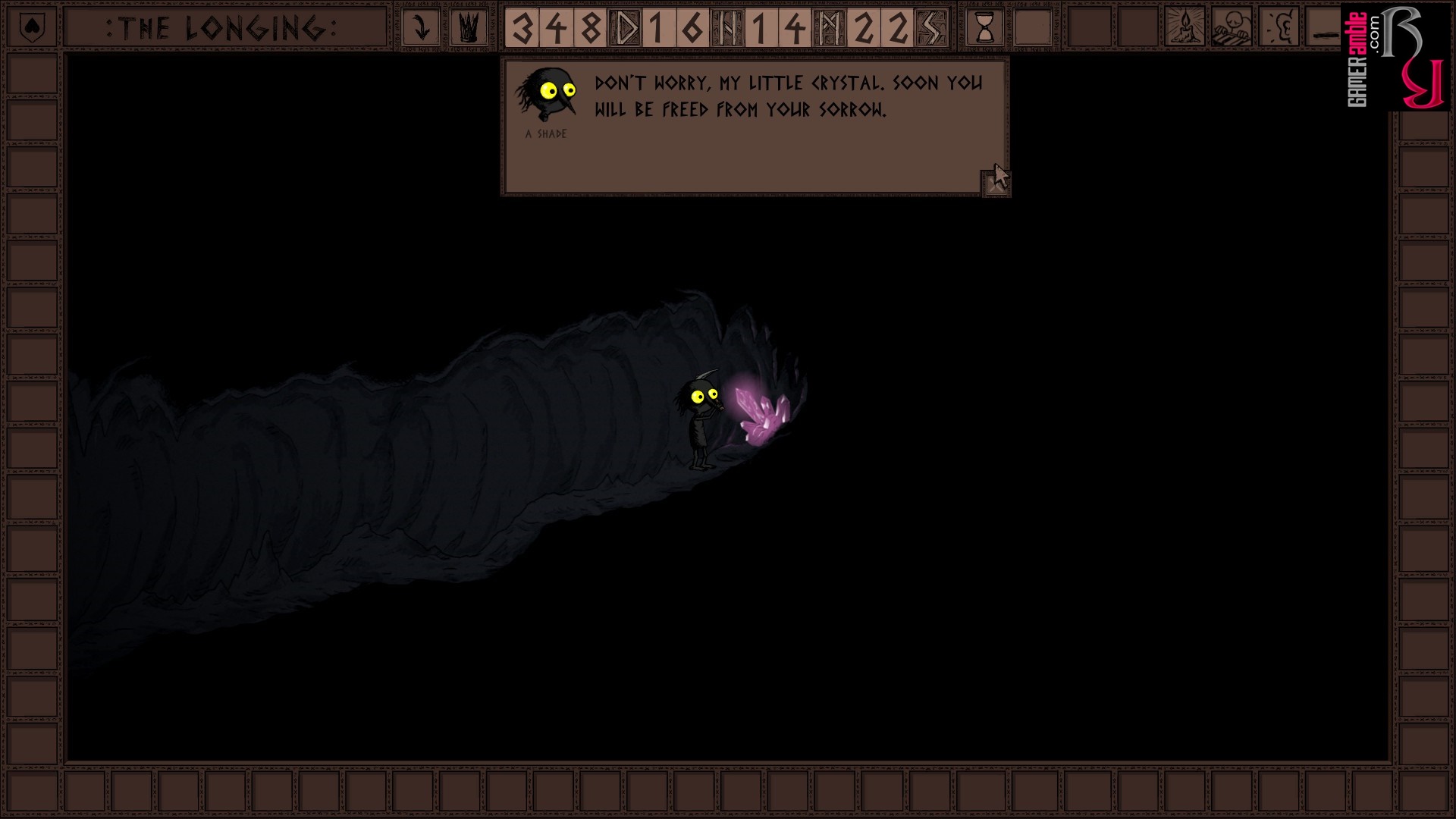The Longing
Developer: Studio Seufz | Publisher: Application Systems Heidelberg | Release Date: 2020 | Genre: RPG / Adventure / Indie | Website: Official Website | Purchase: Steam
Nobody likes to wait, which is something that the mobile gaming market, in particular, has been quick to exploit. These days, most games are about instant gratification, and some players are more than willing to fork over their cash instead of their time to get what they want. This makes the arrival of a game like The Longing even more surprising, as the entire premise of the game appears to be about waiting.
The Longing casts players into the role of Shade, a creature that looks like a bedraggled shadow with large yellow eyes and a needle-sharp nose. Shade is the humble servant of a king who once ruled an underground kingdom. Unfortunately, the king appears to have lost his powers, which would explain why his kingdom is desolate, and Shade is his only remaining servant. To regain his powers, the king decides to sleep for 400 days and tasks Shade with waking him up at the end of his slumber. It sounds like a straightforward task, but 400 days is a long time, especially when you have a counter at the top of the screen showing the remaining days, hours, minutes, and seconds in real-time.
Shade has a tiny little abode with a fireplace and a chair where it can make itself comfortable and wait. Since it apparently does not require food or water, it’s entirely possible for Shade to simply wait out the 400 days before waking the king. The timer continues to count down even if the game is not running, so this means that players could actually start up the game, close it, and start it up in 400 days to reach the ending. While this is certainly one way of experiencing The Longing, a more satisfying approach would be to explore the sprawling underground kingdom in which Shade finds itself.
The first thing we noticed about The Longing, apart from the charming visual style, is how slowly Shade walks. The little creature has no reason to hurry, but his plodding gait will test the resolve of even the most patient player. Then came the realization that not only does the timer count down in real-time (more on that later), but some obstacles can also only be passed by waiting. We thought that waiting two hours for a door to open was extreme, but soon, it became apparent that there are sections that are closed off until days, weeks, and even a month into the game. Clearly, The Longing is not a game that is meant to be played non-stop until completion, but something that you return to now and then or keep running on a second screen as we did.
Just because The Longing provides you with a 400-day deadline doesn’t mean there is enough to do to fill up those days. Exploring your surroundings is a painfully slow endeavor, but it does reveal a couple of interesting locations. You’ll just have to accept that it might take a week for a stalagmite to fall from the ceiling and open up a new path or a month for water dripping from the roof to fill a hole enough for you to swim through. Thankfully, the game allows you to set way-points so that Shade can remember areas of interest to which it might have to return later. Of course, “fast-travel” is not a thing in this game, so even though Shade will return to a way-point you set, it will do so at its usual walking speed. If you are feeling adventurous, you can also instruct Shade to walk to a random spot in the game and see if it passes somewhere interesting during the process.
We mentioned earlier that the timer in the game ticks down in real-time, but this is not strictly speaking true. There is a specific area in the game where time literally stands still, and while Shade is in its home, you can speed up time by ensuring that it is comfortable. Enjoyable activities such as drawing, reading books, or decorating your abode will speed up the timer slightly, but reaching the end of 400 days will still take quite a while. Speaking of the books in the game, you can find most of them by exploring, and each book is an actual public domain title that you can read along with Shade if you are so inclined. The developers even added Steam Workshop support to the game, which allows players to upload and download custom books.
While shambling through the dank, dark caves, Shade can acquire a couple of useful items to help him with his quest. These range from coal that can be used to light his fireplace to books for his library or paper for him to draw on back home. The most helpful item you can discover is a mattock, which can harvest pretty crystals or access new areas. You can even renovate Shade’s room with the mattock and some patience. Not everything you find will be exciting either, as Shade frequently stumbles across dead ends. However, finding these spots rewards Shade with “disappointment,” which, strangely enough, also has a use in the game. Even though Shade was told in no uncertain terms not to leave the caves, the poor, lonely critter often wonders what the world above him looks like, so escape might even be an option. In total, there are four different endings, and let’s just say that some are a lot darker than others and leave it at that.
Visually, The Longing is a nice-looking game, and Shade is undoubtedly a memorable character. Along with the foreboding caves, there are also some interesting locations to discover, and stumbling across one is also a thrill. Exploration is a very lonely experience as Shade is pretty much the only living thing in the caves apart from a spider. We advise players to draw a map while playing to keep track of where they have been and where they want to go. The audio in the game perfectly matches the theme of solitude and loneliness. Apart from some nice synth-sounding tracks, there are also quiet sections where all you hear is the footsteps of Shade on the cold floor and the desolate echoes of the caves around it. The combination of ambient sound effects and music gives the game an almost hypnotic feel at times, which is quite neat. You can also turn off the music and sound effects if you want to leave the game running while watching or listening to something else. The controls are straightforward, as you can double-click wherever you want Shade to move or hold down the left mouse button to guide its path. If you pass anything that Shade can interact with, a small prompt will appear that can be clicked. The game doesn’t have much in the way of traditional puzzles, so most of its secrets can be uncovered through a combination of waiting or stumbling across useful items while exploring.
One thing is sure: The Longing is not a game for impatient players, as the speed at which Shade walks alone would drive them up the wall. Instead, this game is aimed at patient players who don’t mind busying themselves with other things and leaving Shade alone after giving it a destination or instruction. The game does pack a surprising number of secrets, and there are still a few left at the time of writing this review that we have not yet uncovered. Some of the secrets also require plenty of luck or the use of a guide to discover, as they can be pretty obscure.
It would be easy to criticize The Longing for being so slow and intentionally forcing players to wait, but it definitely makes for a different experience compared to other games. If you are the type of player who has patience, can multi-task, and doesn’t mind a game that makes you wait for every reward, then you will enjoy The Longing. If, on the other hand, you measure value for money in terms of explosions per second, then The Longing is perhaps not for you.
System Requirements
- Minimum PC System Requirements
- Recommended Mac OS X System Requirements
- Minimum SteamOS + Linux System Requirements
- Recommended SteamOS + Linux System Requirements
- OS: Windows 7
- Processor: 1.2 GHz
- Memory: 4 GB RAM
- Graphics: 1024MB VRAM
- Network: Broadband Internet connection
- Storage: 5 GB available space
- Processor: Intel Core i5 2.8Ghz or equivalent
- Memory: 4 GB RAM
- Graphics: GeForce GT 650M, AMD Radeon HD 6750M or better
- OS: Ubuntu 12.04 or newer, other unsupported distros may work
- Processor: Intel Core 2 Duo 2.0Ghz or equivalent
- Memory: 3 GB RAM
- Graphics: Intel Core HD Graphics 3000/4000, NVIDIA 8800 GT, ATI Radeon HD 4850 or better (Open Source Drivers NOT SUPPORTED)
- Hard Drive: 3 GB available space
- Sound Card: lib32-alsa-plugins or libasound2-plugins:i386 and libasound2-plugins-extra:i386 may be required.
- Additional Notes: NOT SUPPORTED: ATI Radeon X1600, Intel GMA950, NVIDIA Geforce 7050
- OS: Ubuntu 14.04
- Processor: Intel Core i5 2.8Ghz or equivalent
- Memory: 4 GB RAM
- Graphics: NVIDIA GeForce 450, AMD Radeon HD 5670 or better
- Hard Drive: 3 GB available space


